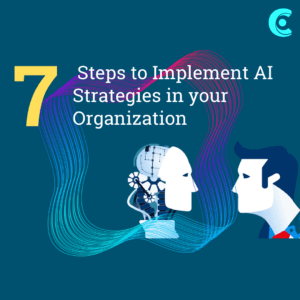How to Implement AI Strategies in your Organization

-
-
- Align AI Strategy with Business Objectives – The leadership, IT, and end users in the Sales/Marketing departments, among other parties and stakeholders, would all need to support an AI development project. Businesses must ensure that their AI initiative is in line with their entire business strategy and that all parties involved are aware of the requirements for their participation and contribution for the project to succeed.
- Data Availability – Data powers AI; therefore, organizations need to know their data, who has access to it, and how they use it across all of their programs and services. The data should be made available in the appropriate format and should be of high quality.
- Identify Issues AI will Address – Prioritize your efforts by concentrating on the easy targets. Leverage AI for the process that focuses on the areas that will boost revenues and cut costs. Use AI to optimize operations, which are essential for corporate success. Put more emphasis on data-driven processes and procedures that enhance interaction with customers and employees.
- Conduct Internal Assessment – Implementing an AI strategy involves assessing your internal capabilities to determine whether your in-house team can undertake the assignment. You can gauge your technical depth by looking within your in-house resources. Your internal analysis will assist you in determining the technologies needed to carry out the AI project.
- Choosing the Right Method – This necessitates brainstorming on whether to build the AI solution from scratch using your in-house resources, buy an off-the-shelf product, or collaborate with a domain expert to completely outsource the AI development. Building AI-powered solutions require creating algorithms that help machines develop human-intellect-like abilities, to improve business workflows.
- Consider Legal & Ethical Aspects – Significant security, privacy, regulatory, and compliance difficulties, as well as moral and legal ramifications, are all associated with AI. Executives should address these concerns from the beginning and as their AI initiatives develop.
- Analyze the Performance – The success of the AI adoption is determined by a post-implementation review of the AI model that compares the outcome with the predetermined set of KPIs over some time. Based on the degree of variation, necessary corrective actions are implemented.
Share your Thoughts!
-
